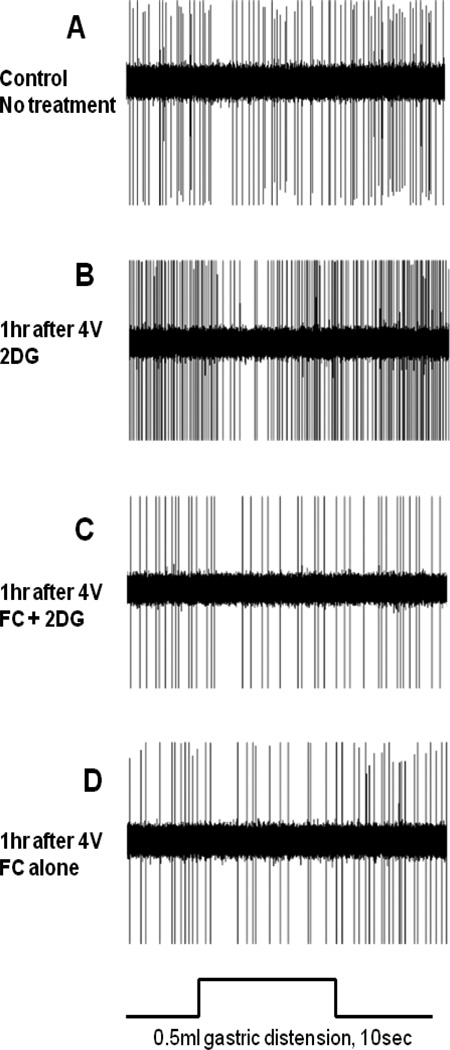FIGURE 9.
Neurophysiological recordings made from gastric-DMN neurons.
Relative to control conditions [A], the primary effect of cellular glucoprivation [4V 2DG] was an increase in the basal firing rate of DMN neurons identified as part of the gastric accommodation reflex [B]. Application of the transient gliotoxin, fluorocitrate [4V FC], prior to 4V 2DG, blocked the effects of cellular glucoprivation to increase the excitability of gastric-DMN neurons [C]. Presence of FC alone in the 4V [D] did not appear to affect the basal firing rate of gastric-DMN neurons.
Mild balloon distension [0.5ml] of the gastric antrum elicits a vagal afferent-NST-DMN neuron reflex characterized by a rapid reduction in DMN firing [see also FIG 1]. This reduction in DMN firing rate causes an immediate reduction in gastric motility referred to as gastric accommodation reflex. With the elevated basal activity of DMN neurons in response to 4V 2DG, we can explain the increased motility observed in FIG 8A. Thus, although gastric distension still elicits a drop in DMN firing rate, the reflex is dwarfed relative to the dramatic increase in basal DMN firing caused by exposure to 2DG.

